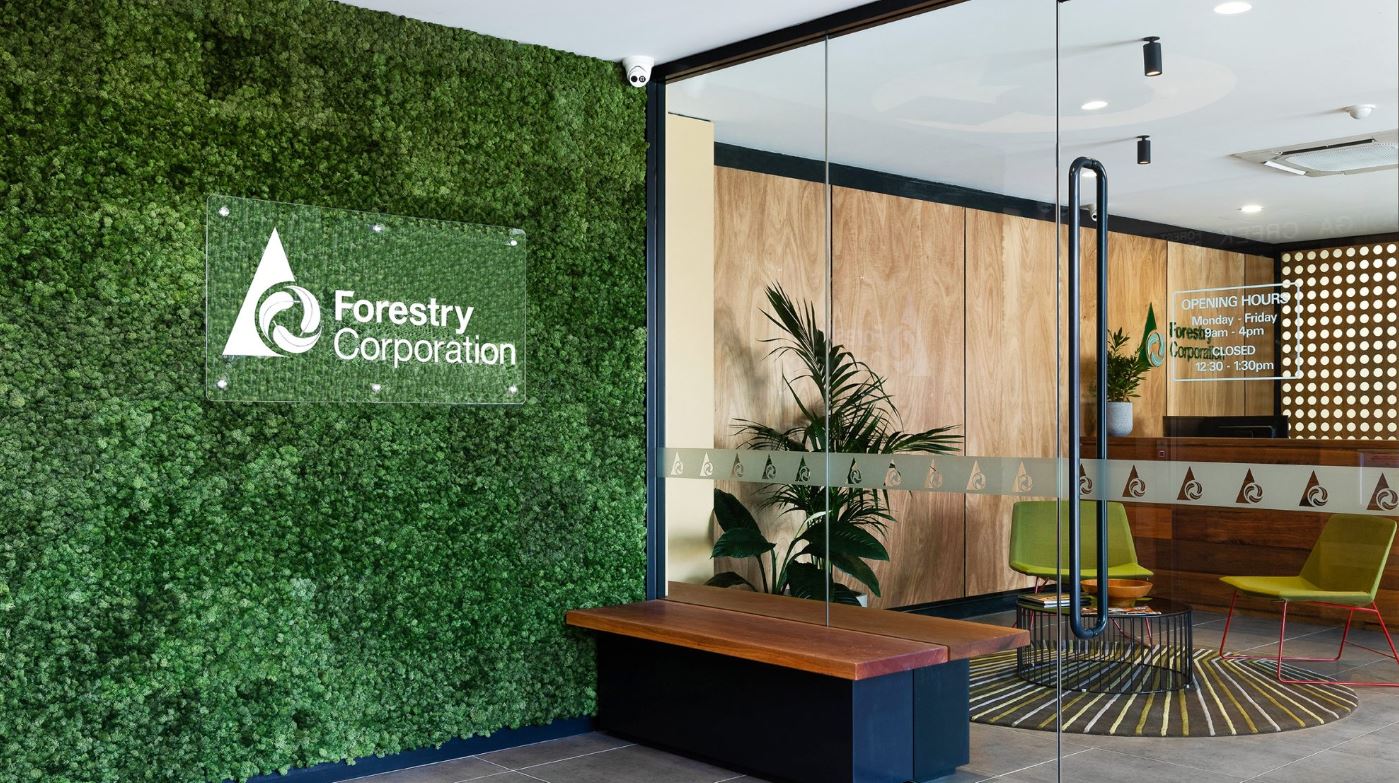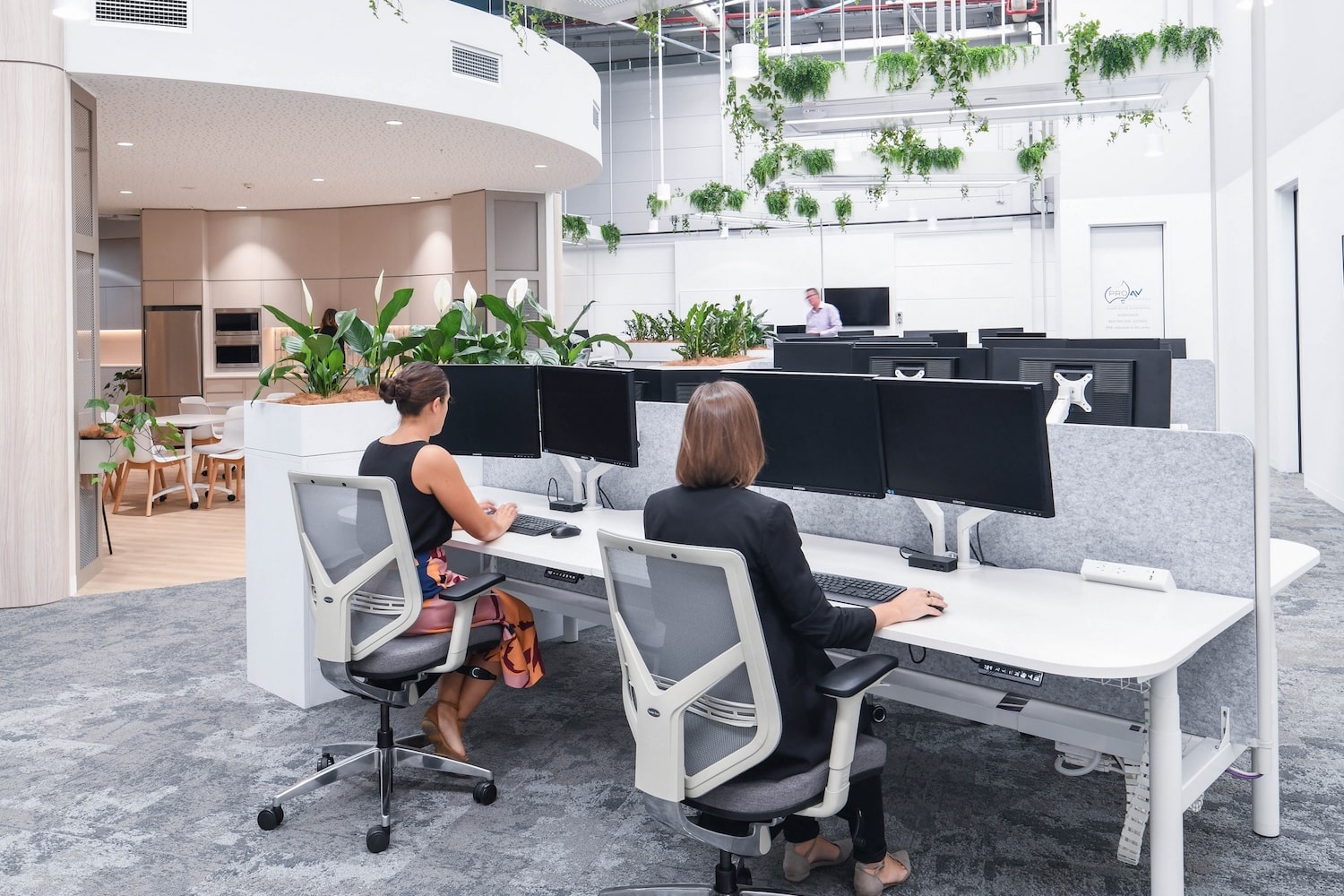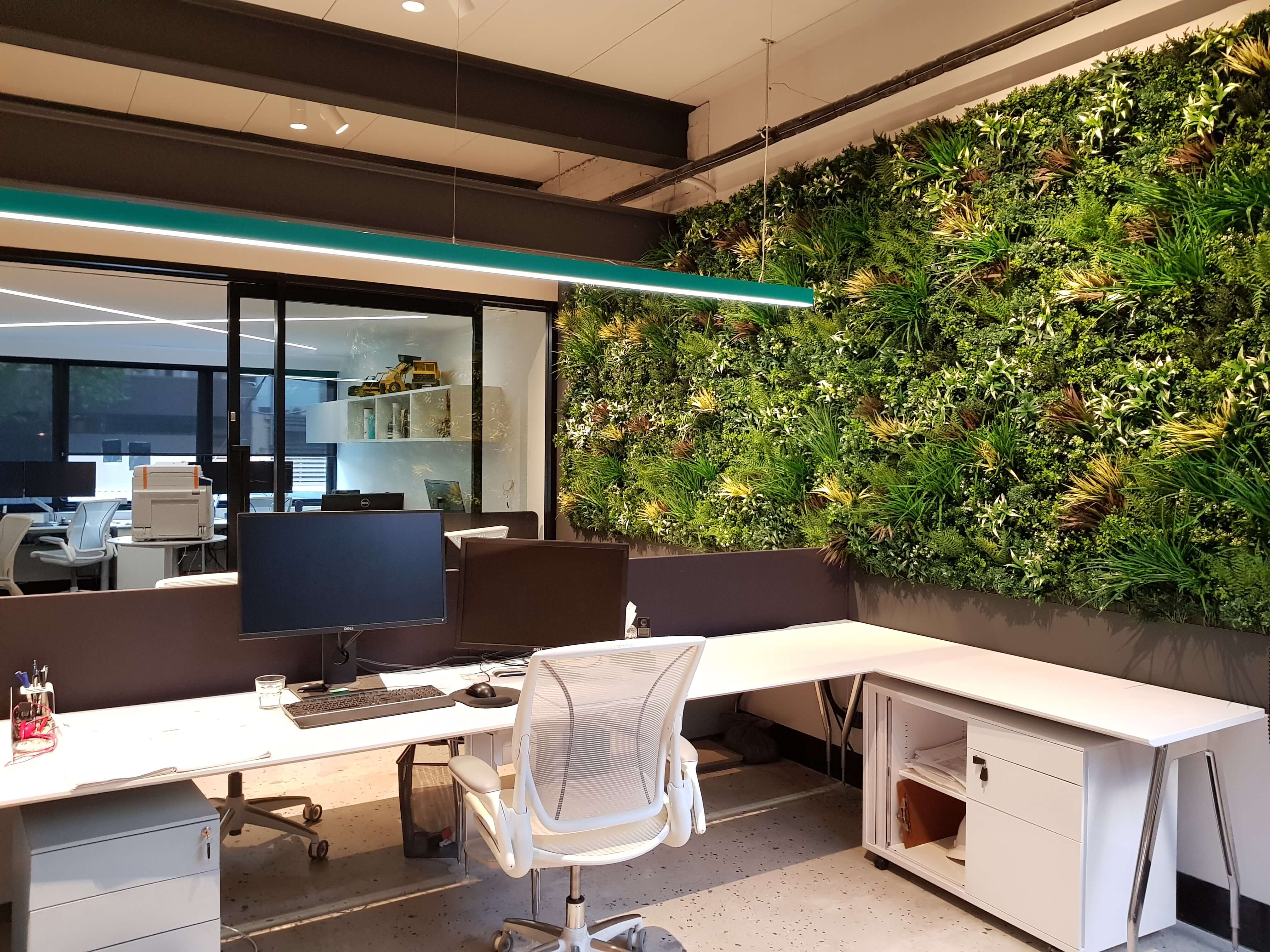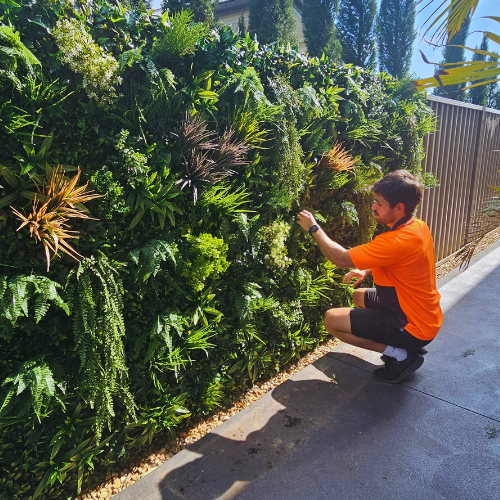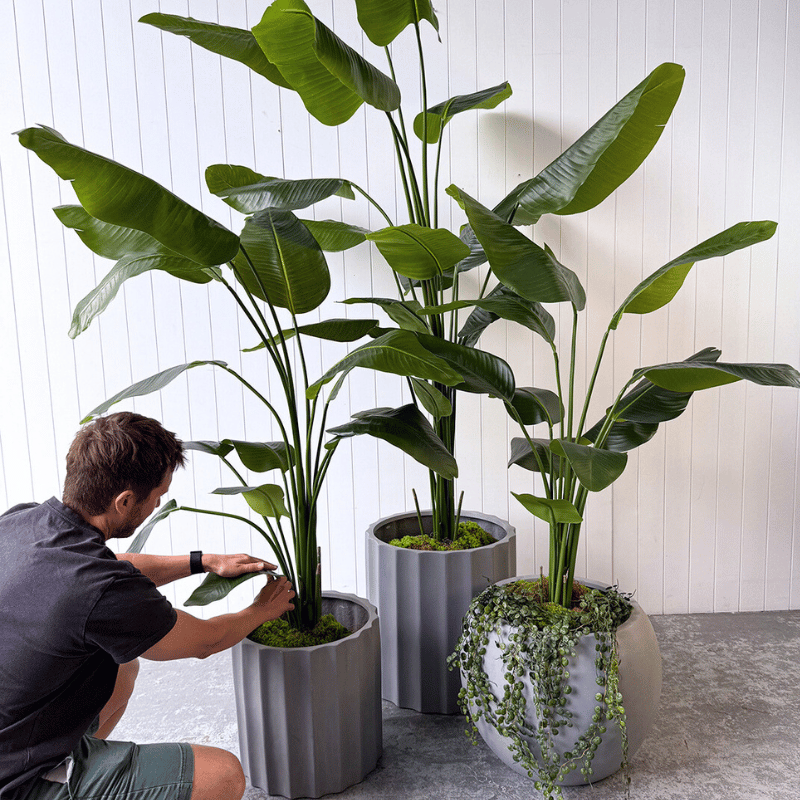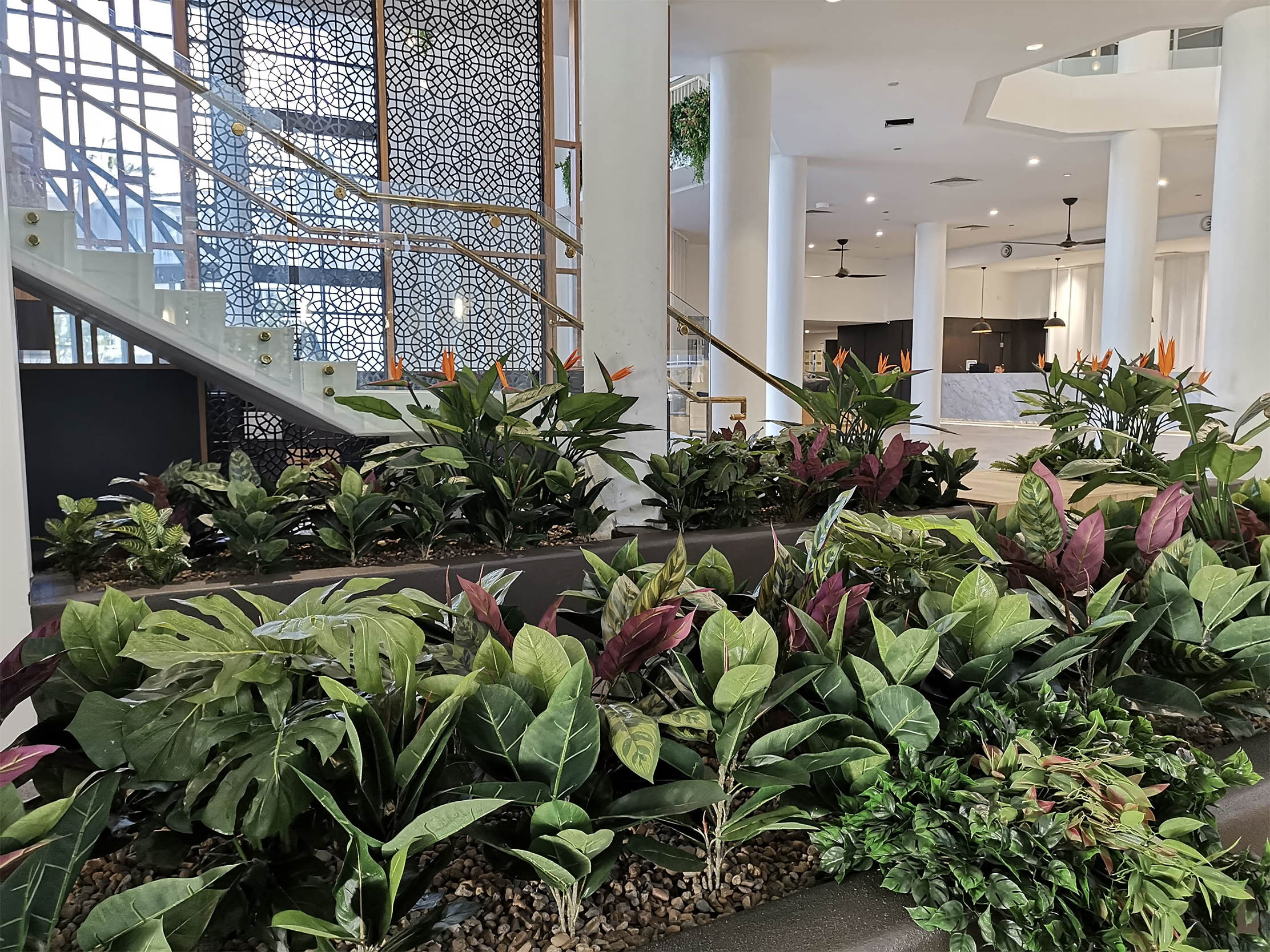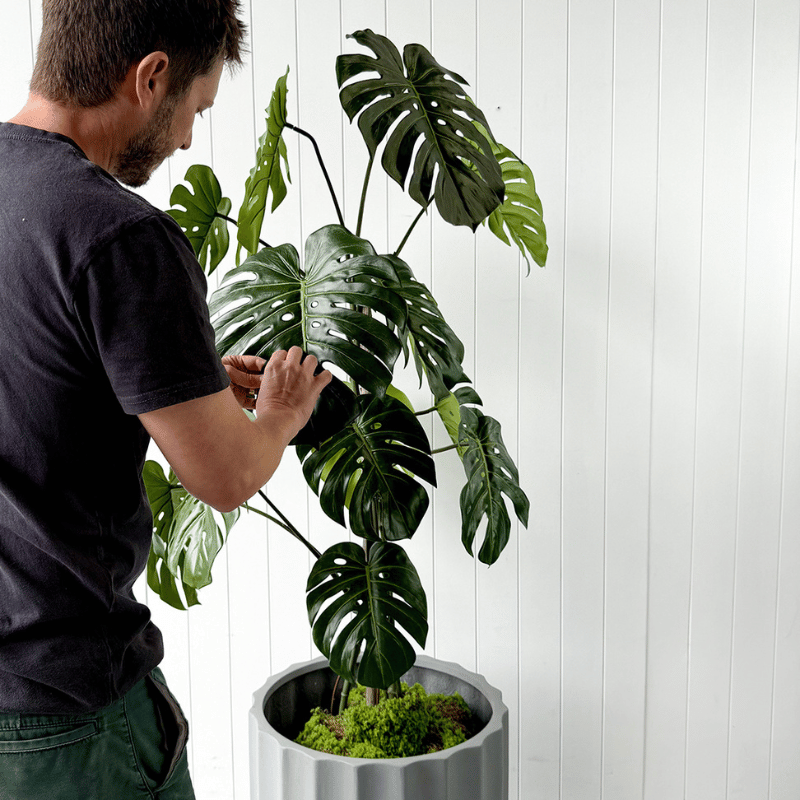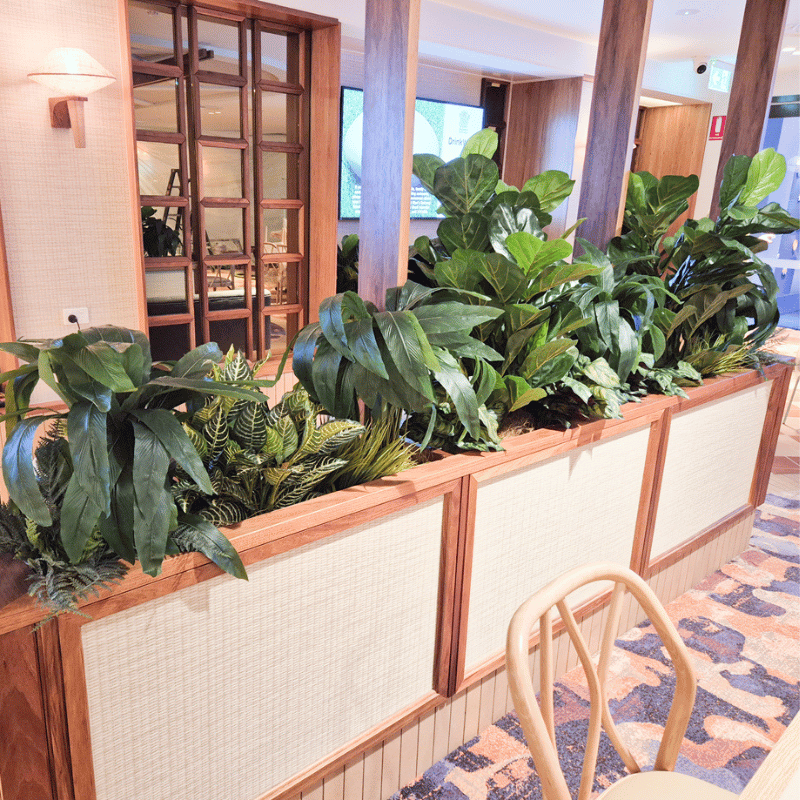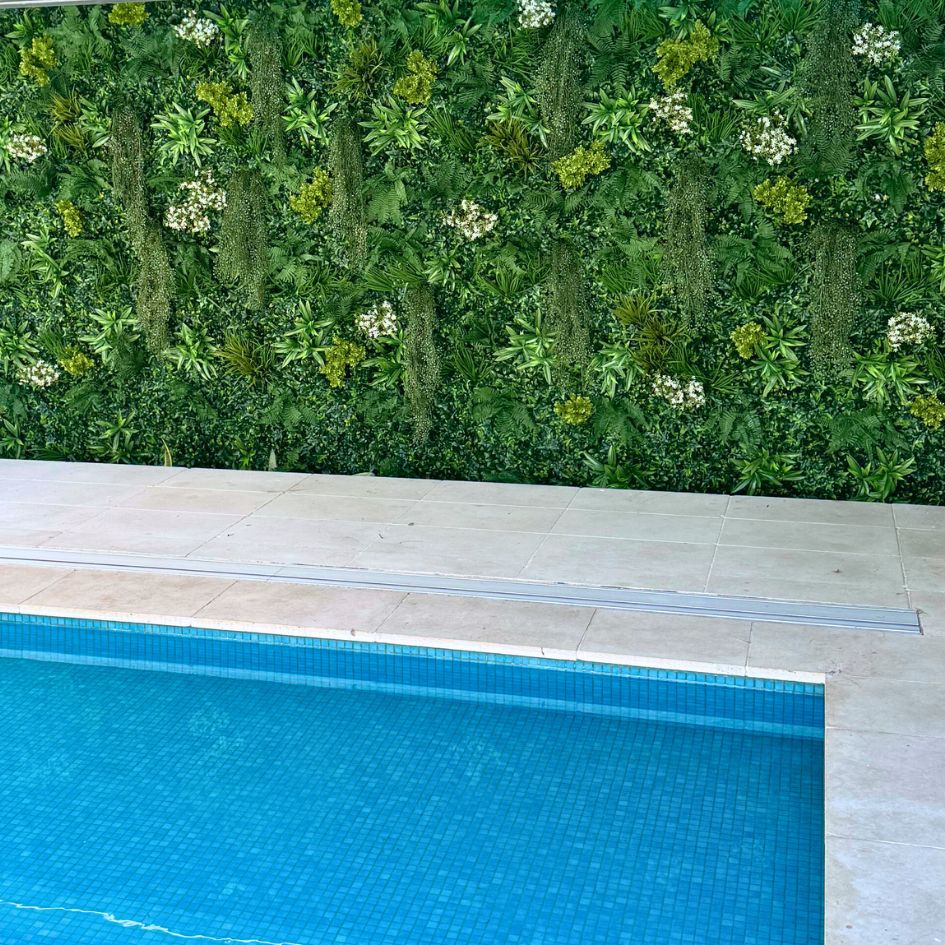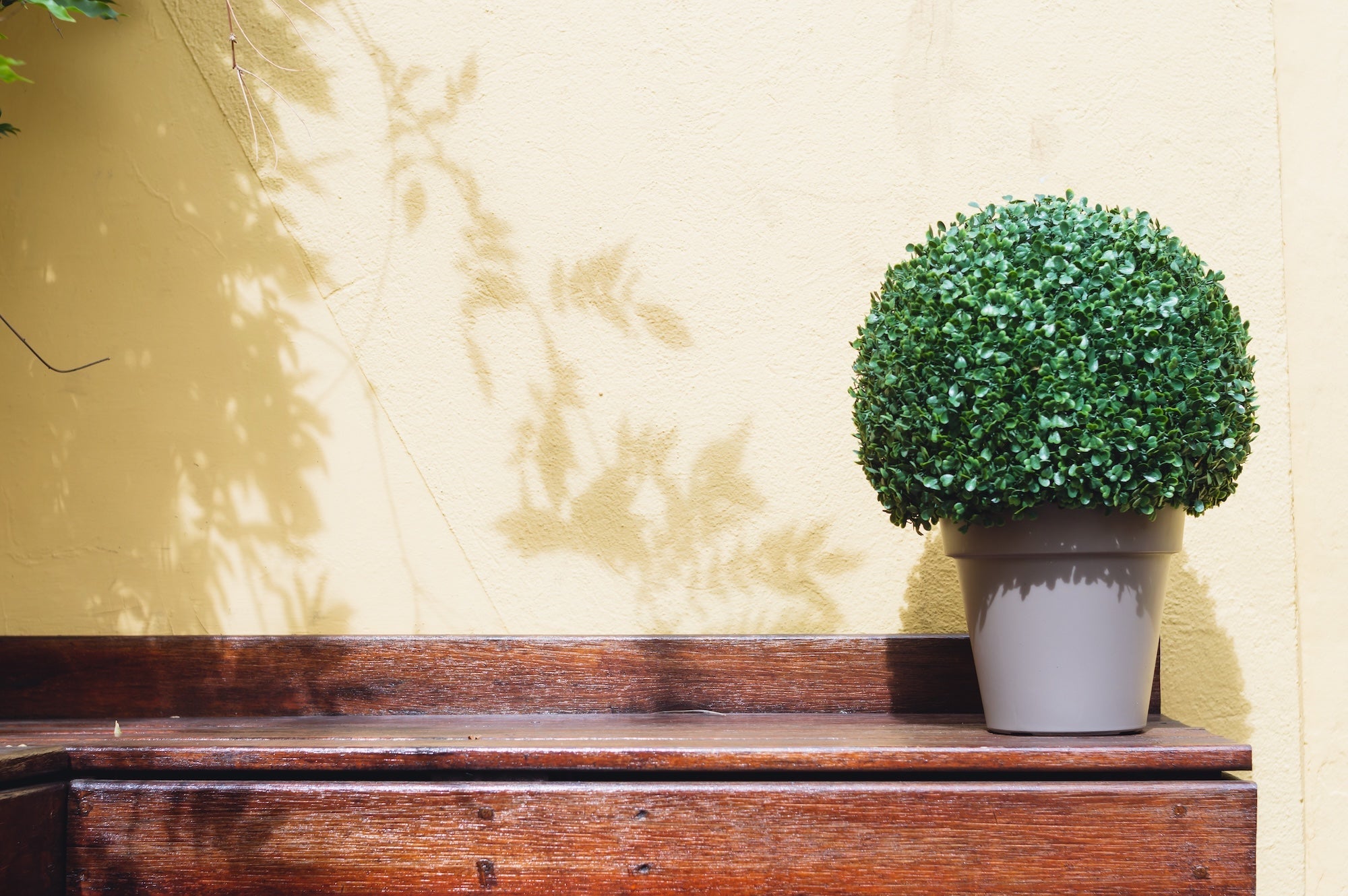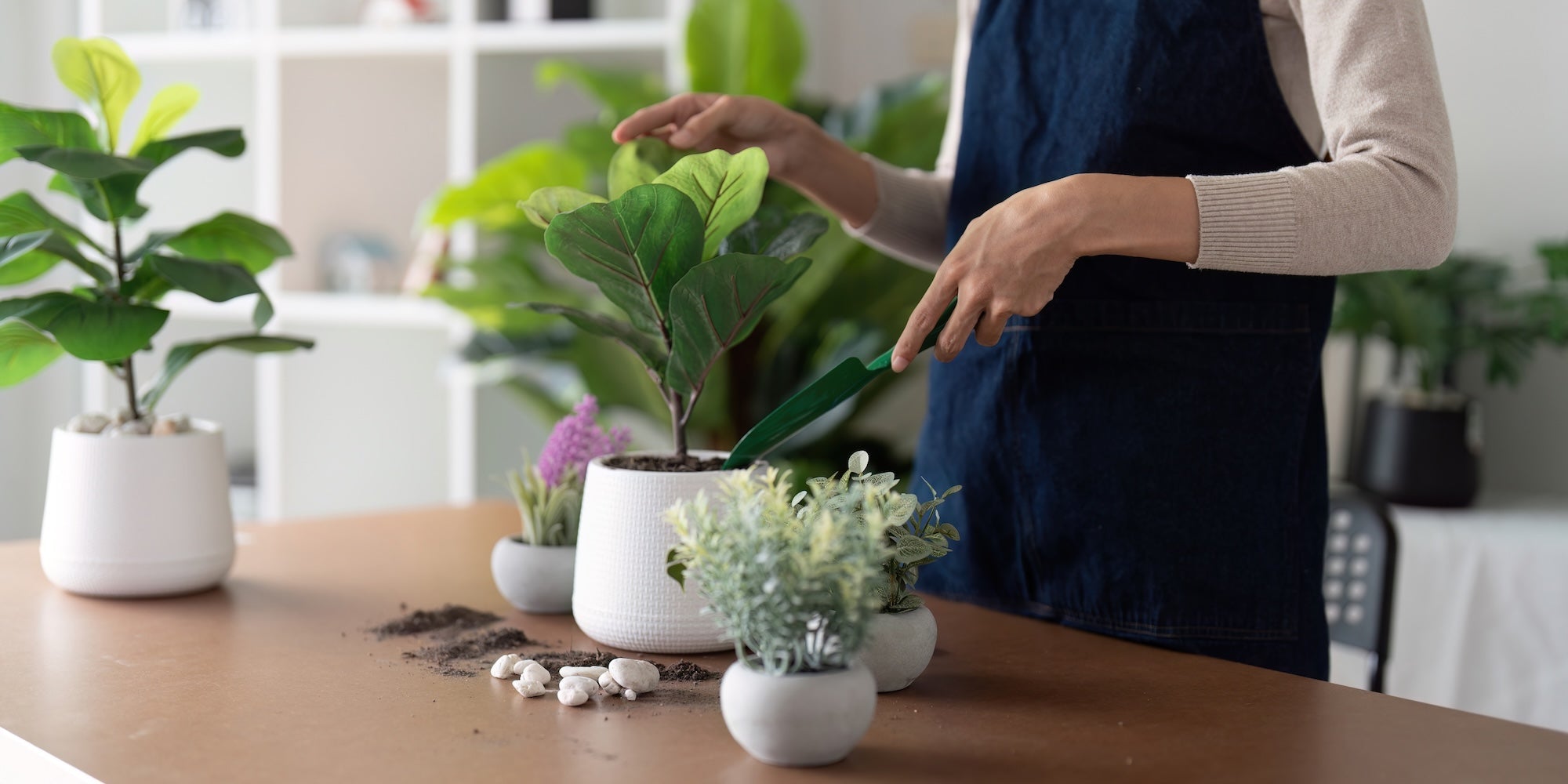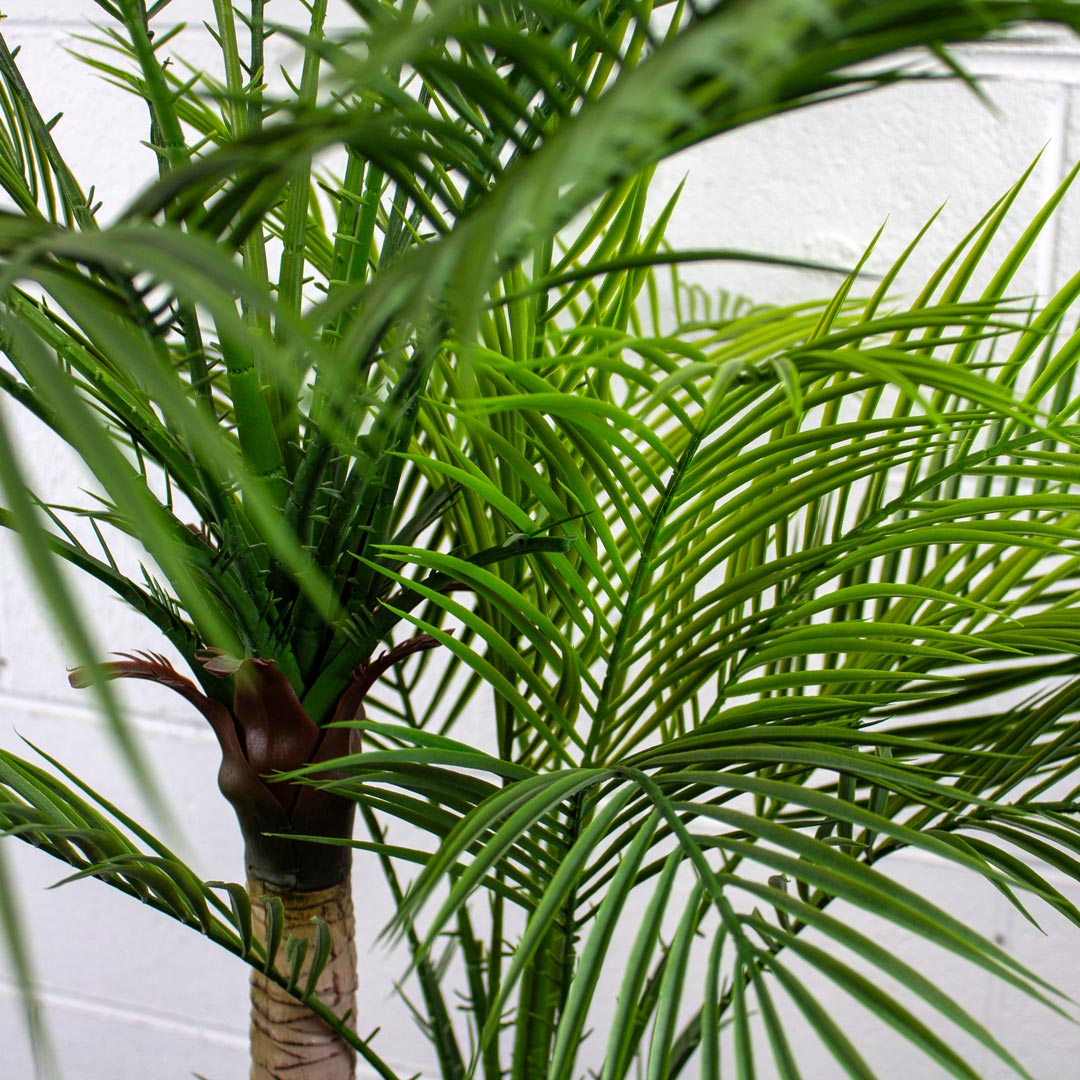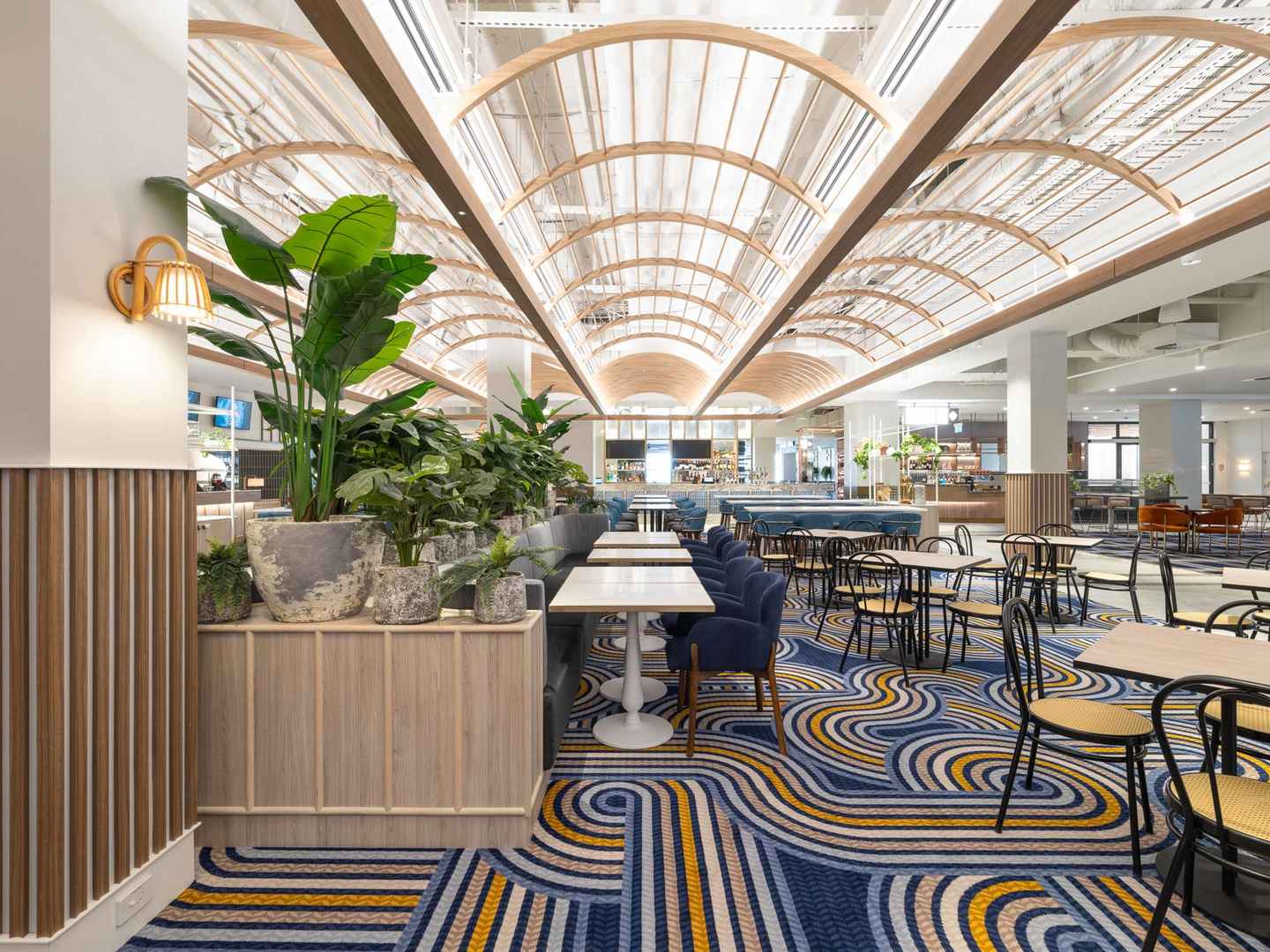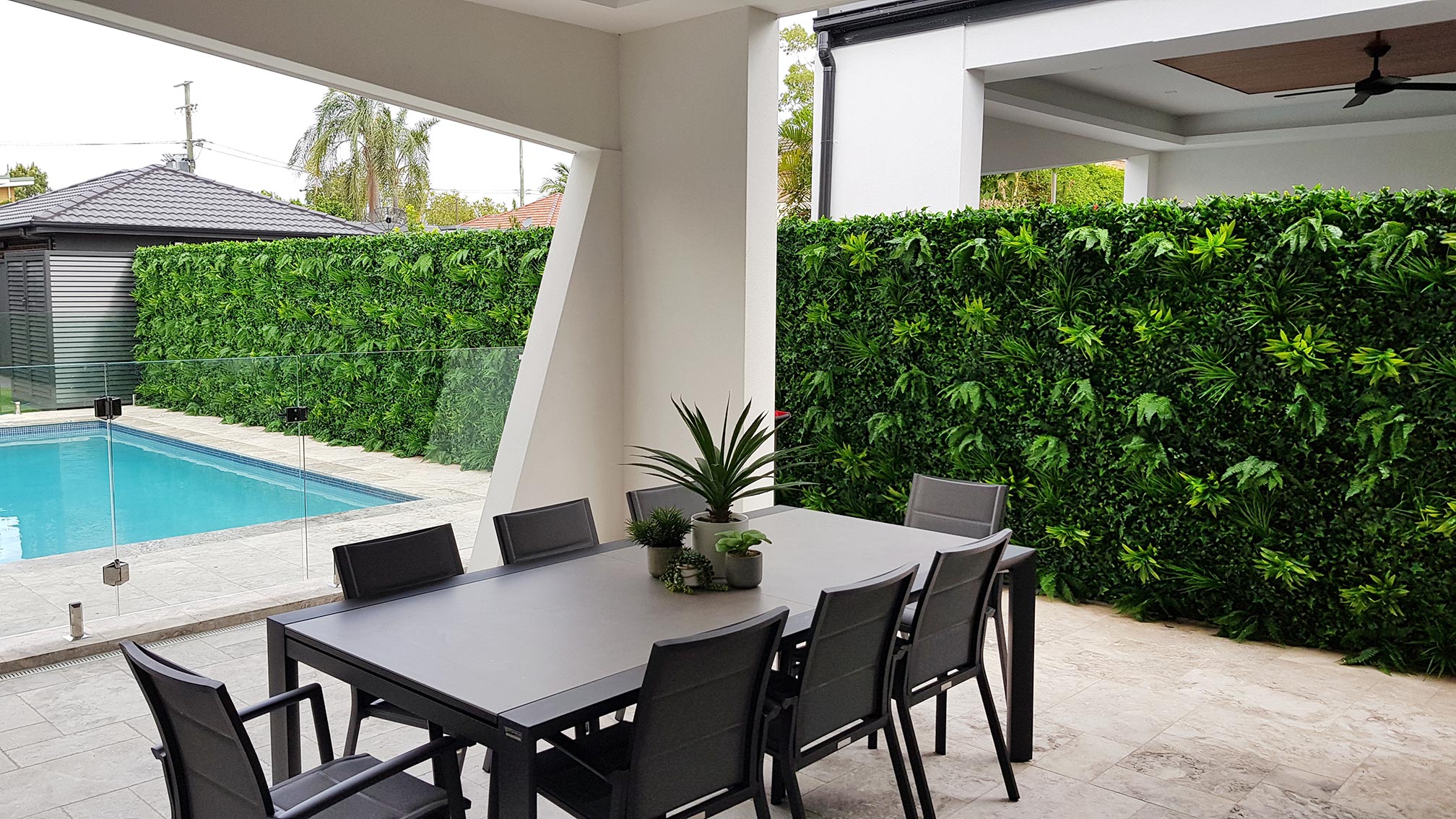Biophilic design takes the innate need we feel as humans to be close to nature and incorporates this into interior design resulting in a multitude of health, wellness and productivity benefits.
What is Biophilic Design?
Originally coined by American biologist Edward O Wilson back in the 1980’s, designers have taken this trend on board as society has become increasingly aware of the importance of health and wellness in the workplace.
The essence of biophilia comes from our instinctual need to be close to the natural world, and the theory that the built environment can trigger stress as it lacks connection to our agrarian roots.
In biophilic design, aspects of nature can come in the form of:
- Natural timbers
- Stone and other natural materials
- Curvatures and natural geometry
- Greenery and botanical motifs
- Natural light and spatial variability
- Views and vistas
All of which are thought to generate a connection to our surroundings, effecting positive chemical and physical responses in the body.
Office spaces and workplaces are often designed as sterile, symmetrical and corresponding to a thematic design brief. However, when you immerse yourself in nature you will notice that shapes are organic, unique and textures differ completely from one another. Every blade of grass is a different length to the next, the edges of leaves are jagged and patterns do not conform to a uniform approach. These elements, referred to as natural geometry are all important aspects of biophilic design. Search Engine Giant Google utilises these design components in their Chicago office, using “biomorphic furniture, floor to ceiling windows and undulating walls”, as written about by architect Amanda Sturgeon. Incorporating variability in textures and shapes was part of the design team’s wide scale efforts to “create healthy environments that inspire and empower employees”.
In her article, Amanda emphasises the importance of using biophilia as a design driver in order to make buildings increasingly human friendlier rather than simply using it as an addendum, as so many designers tend to do. This means planning spaces and structures around the central concept of biophilia and ensuring all aspects adhere and compliment the feeling of ‘nature indoors’.
We as humans spend about 90% of our time inside buildings, according to the 2001 National Human Activity Pattern Survey and its proving to be detrimental. Even when we aren’t indoors, we are still spending minimal time in nature and too much time in our concrete, urbanised societies. Its estimated that by 2050, 70% of humankind will live in cities, making the need for nature immersion more important than ever. Biophilic design recognises the perceived benefits of bringing nature indoors, as it has been proven time and time again to help humans in all aspects of health and wellbeing. It takes these advantageous features and implements them to create healthier environments where employees can thrive and creativity, efficiency and happiness are all nurtured, resulting in positive workplace experiences.
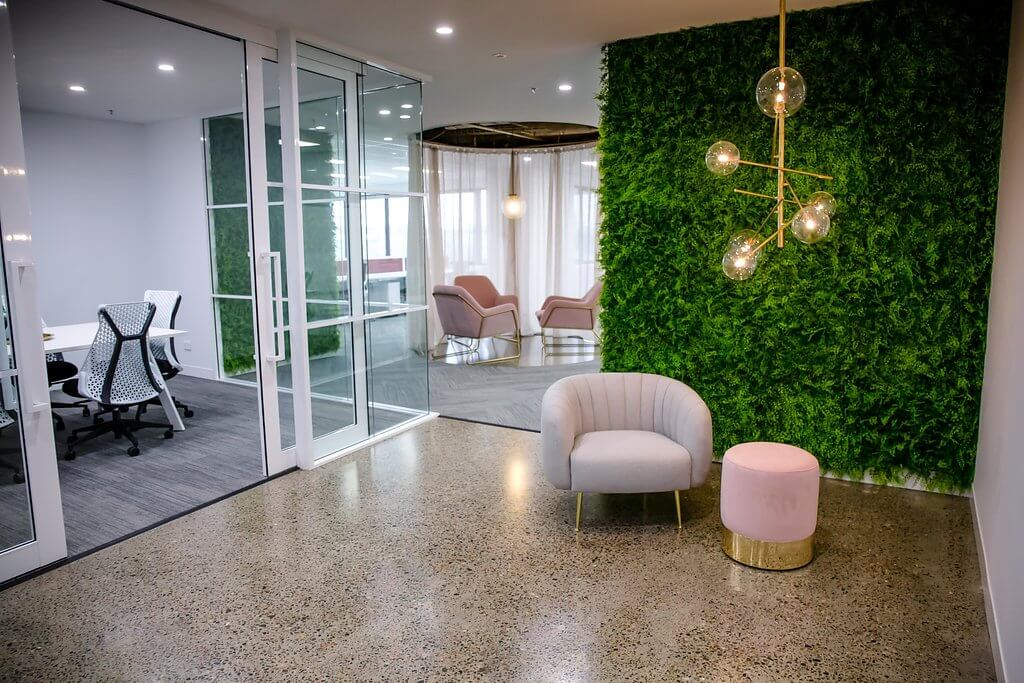
Why should these factors be of significance to workplaces and employers?
The Statistically Concerning Problem
Well, stress is such a halting force when it comes to productivity in the workplace and can contribute to serious mental health conditions and subsequently physical illness, costing the Australian economy and employers millions.
Stress is already known to increase the production of cortisol levels in the body, which has the potential to suppress immune systems and exacerbate pre-existing medical conditions and inflammation. The World Health Organisation forecasts that stress related illness will be the leading contributor to disease by 2020, a damning fact that should be addressed in every workplace. As statistics currently stand, the average Australian employee already takes 9.7 sick days and costs employers $3608 per annum in wages and other deductions including a decrease in productivity and low motivation by fill-in employees. If stress-related illnesses continue to rise, employers will see an increase in sick-day costs and a heightened strain on business.
Mental health disorders are also rampant in companies and posing large risks to productivity too. According to the World Health Organisation, mental illness constitutes 10% of the global burden of disease and in Australia alone depression is currently costing the economy 3.3 billion dollars annually, as cited in Health Promotion International. That figure is based on lost productivity alone, meaning the cost of treatment would add to this already exorbitant cost.
The Evidence-Based Solution
How does this all tie in with biophilic design? Through numerous published studies, biophilic design has been proven time and time again to have huge positive effects on both physical and mental health.
Each different element in biophilic design can effect positive change on health;
- Increased natural light can improve circadian system functioning
- Well insulated buildings can improve thermal comfort
- Natural ventilation can enhance productivity
- Greenery can trigger feelings of connectedness and happiness. It's also been proven to have a calming effect.
As a result, hospitals all over the world are taking biophilic design into consideration when it comes to the health and wellbeing of their patients.
One hospital in Norway built a stand alone cabin in the forest surrounding the hospital in an effort to provide patients and their families a healing space to stay, close to the medical care they need in an endeavour to use nature’s well-known healing properties. In terms of physical health, post-operative recovery times can be reduced by 8.5% when views of nature are available from a patient's hospital room, while also holding strong pain mitigation properties. Another hospital in Toronto has taken full advantage of mother nature’s therapeutic capabilities, ensuring that every patient has a view of the nearby park from their room, hoping to make their road to recovery smoother and faster.
Biophilic benefits can similarly translate directly to the working environment, with an article by architecture company Oliver Heath stating that wellbeing has been increased on average by 13%, with reduced instances of absenteeism when biophilia is present in workplaces. Biophilic design elements are naturally beautifying in any workplace and the scale of which biophilia needs to be present to have any noticeable effects is large but the return on investment is evidently huge. Not only are levels of creativity nurtured by connections to nature, but a modern workplace is also instrumental in enticing the most talented of staff to join your organisation and provide maximum intellectual function. Job candidates at the top of the talent pool are much more inclined to accept a job offer at a forward-thinking workplace with the wellbeing of its employees and their development clearly prioritised. Therefore it makes sense that design is a main concern of top organisations across the world including Google, Amazon and Apple and is arguably key to individual and collective professional success.
The Industry Players Championing Biophilic Design and How They Are Implementing It
Biophilic design is arguably the most relevant and implemented trend in the current industry. It performs more functions than any other design theory and is backed by countless scientific research studies. For this reason, it is constantly championed by key industry players including architects, interior designers and top global organisations.
The Biophilic Cities organisation is run by Tim Beatly, a well-known architect and professor of sustainable communities. His organisation is comprised of other architects and researchers whose main objective is to unite cities in their endeavours to incorporate as much nature as possible when designing cities based on benefits to the surrounding environment, the animal inhabitants and obviously humans themselves. Biophilic Cities “acknowledges the importance of daily contact with nature as an element of a meaningful urban life”, as stated in the organisations mission.
The participating partners in the Biophilic Cities network includes major cities all over the world such as Austin, Barcelona, Edinburgh, Birmingham and so many more, portraying the global significance on nature incorporation for everyone living in urbanised societies.
Another movement advocating the benefits of biophilic buildings is the WELL Building Standard, an initiative encouraging designers, architects and construction companies to “implement, validate and measure features that support and advance human health and wellness.” It was developed based on medical and scientific research on environmental health, human behavioural patterns and the built environment and ultimately aims to help “build a healthier world” by providing a set of guidelines and a global rating system.
Added credibility to the theory also comes from the many multinational companies that purposefully specify biophilic design when it comes to designing their offices. Large-scale corporations value a productive workplace more than anybody and also have the financial power to employ the most renowned architects and designers to create their all-important work spaces.
Online buyer and seller community Etsy takes pride in its green library where employees can immerse themselves in an indoor jungle while researching and working. AirBnB Headquarters in San Francisco installed a large scale green wall in a light filled, timber dominant space to help employees feel like they’re working among nature rather than in an office building.
Apple Park Headquarters used a much more minimalistic approach, with huge floor to ceiling windows in a donut-shaped building that allows views of nature and greenery from wherever you are in the building.
Amazon Corporate Headquarters took nature immersion to new dimensions when they opened their plant-filled spheres in Seattle which were designed by globally renowned architecture firm NBBJ. They announced that the shapes were chosen for their common occurrence in nature and were designed as a place for their employees to work and the public to experience greenery in an urban setting.
These workspaces are all incredible yet extravagant examples of biophilic design, however there are certainly more viable options for biophilic design in small design budgets. Use of natural colours, realistic looking timber alternatives, fake green walls and mismatched floorings and furnishings can all be used to create feelings of closeness to nature and are much more cost effective solutions. For more affordable ways of implementing biophilic design click here.
Biophilic design is a framework that places value on human health and channels this through our intuitive appeal to our natural surroundings. It recognises that nature is a necessity when nurturing human wellbeing and therefore should be present in places where we spend most of our time. When health and wellbeing is at the forefront of people's minds, its crucial that businesses reflect this especially in something as important as a workplace.
